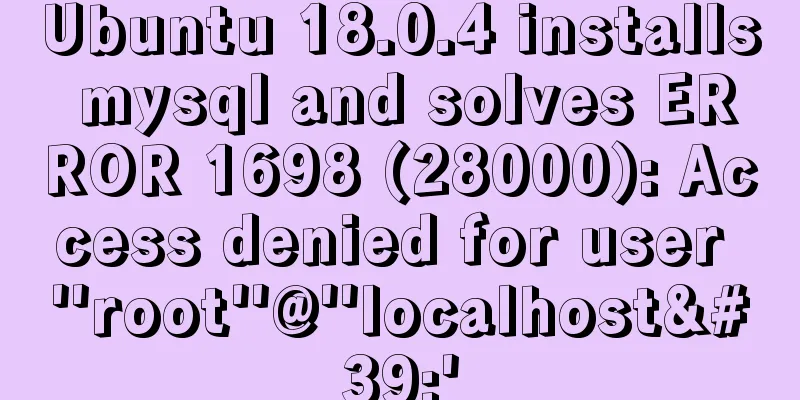Summary of using the exclamation mark command (!) in Linux

|
Preface Recently, our company has configured mbp, and I use ssh more often. I am too lazy to write those complicated commands, so I searched for a command on the Internet and found it is more suitable for me. The '!' symbol can not only be used as a negation symbol in Linux, but can also be used to retrieve commands from the historical command record or execute previously run commands without modification. The following article will give you a detailed introduction on how to use the Linux exclamation mark command (!). Let's take a look at the detailed introduction. Exclamation mark command usage Double exclamation mark!! ! ! Represents the last command entered, which can be combined with other commands to form a new command eg: $ ./startup.sh $ cat !! This command is equivalent to cat ./startup.sh, eliminating the need to switch back and forth !$ Represents the last parameter in the previous command eg: $ ls /usr/local/dic $ cat !$/a.txt If the previous path is a long one, it will be very convenient. !string Represents the most recent command that begins with the specified string eg: $ !ssh Execute the most recent ssh command !? string? Similar to MySQL's fuzzy matching, execute the command containing the specified string in the most recent command eg: $ !?ssh? Execute the most recent command involving ssh !n or !-n This command is usually used with the history command.
Use history to find ssh records eg: $ !109 Execute history to query the command with the previous sequence number 109 $ !-1 Execute the command corresponding to the number obtained by subtracting 1 from the current command number I just changed jobs recently and I'm quite busy, so the updates are quite slow. Summarize The above is the full content of this article. I hope that the content of this article will have certain reference learning value for your study or work. If you have any questions, you can leave a message to communicate. Thank you for your support for 123WORDPRESS.COM. You may also be interested in:
|
<<: Detailed steps for creating a Vue scaffolding project
>>: Mysql 5.7.17 winx64 installation tutorial on win7
Recommend
Build a severe weather real-time warning system with Node.JS
Table of contents Preface: Step 1: Find the free ...
How does MySQL achieve master-slave synchronization?
Master-slave synchronization, also called master-...
VMware vSAN Getting Started Summary
1. Background 1. Briefly introduce the shared sto...
How to implement import and export mysql database commands under linux
1. Export the database using the mysqldump comman...
How to connect to a remote server and transfer files via a jump server in Linux
Recently, I encountered many problems when deploy...
Use CSS to prevent Lightbox to realize the display of large image code without refreshing when clicking on small image
Use CSS to prevent Lightbox to realize the displa...
Detailed analysis of MySQL instance crash cases
[Problem description] Our production environment ...
An audio-visual Linux distribution that appeals to audiophiles
I recently stumbled upon the Audiovisual Linux Pr...
Example of implementing a virtual list in WeChat Mini Program
Table of contents Preface analyze Initial Renderi...
The problem of introducing specified font @font-face in CSS to be compatible with various browsers
When making a web page, if you want to use a spec...
Vue implements mobile phone verification code login
This article shares the specific code of Vue to i...
HTML table markup tutorial (16): title horizontal alignment attribute ALIGN
By default, the table title is horizontally cente...
Detailed explanation of command to view log files in Linux environment
Table of contents Preface 1. cat command: 2. more...
Vue integrates a rich text editor that supports image zooming and dragging
need: According to business requirements, it is n...
VMware Workstation download and installation detailed tutorial
Virtual machines are very convenient testing soft...










